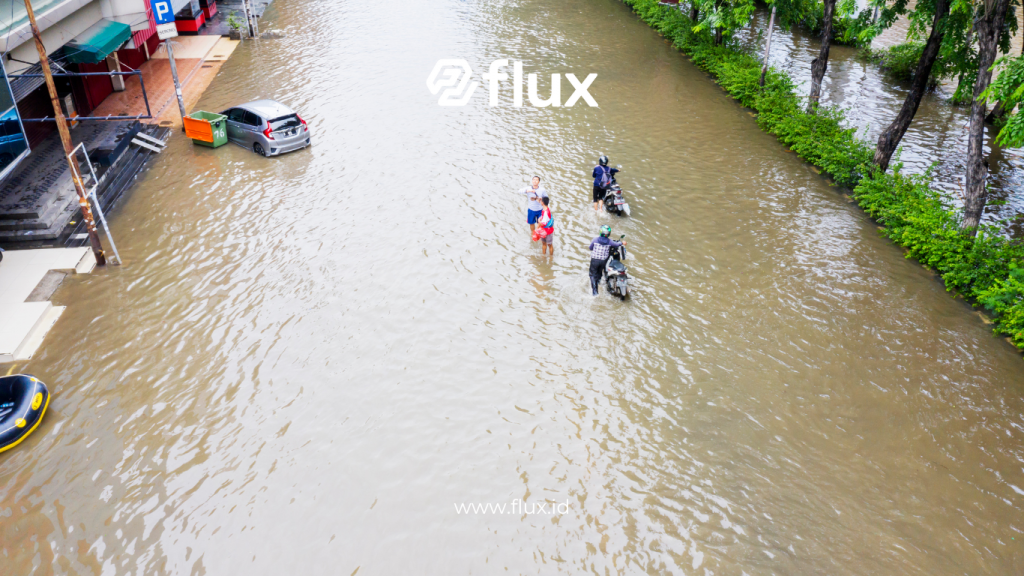Don't miss our holiday offer - 20% OFF!
Flooding is one of the most frequent natural disasters, often leading to significant material losses and loss of life. However, with technological advancements, the Internet of Things (IoT) offers innovative solutions for early flood detection, which can minimize its impact. This article will explore how IoT is applied in flood detection systems, the technology used, and the various benefits it provides to communities.
Contents
- 1 1. What is IoT in Early Flood Detection?
- 2 2. Key Components of IoT in Flood Detection
- 3 3. How IoT Works in Flood Detection Systems
- 4 4. Benefits of IoT for Early Flood Detection
- 5 5. Challenges in Implementing IoT for Flood Detection
- 6 6. Case Study of IoT Implementation for Flood Detection
- 7 Conclusion
1. What is IoT in Early Flood Detection?

Read More: Preventing Floods with IoT Sensors: Innovations in Flood Monitoring Systems
The Internet of Things (IoT) is a network of interconnected devices that can share data. In the context of flood detection, various IoT devices, such as sensors, cameras, and weather stations, are used to monitor environmental conditions in real-time. The collected data is then analyzed to provide early warnings to the public and authorities, allowing them to take appropriate mitigation actions.
2. Key Components of IoT in Flood Detection
IoT for flood detection involves several key components, including:
- Water Level Sensors
These sensors measure the rise in water levels in rivers, reservoirs, or flood-prone areas. - Rainfall Sensors
These sensors monitor rainfall intensity across different locations to detect extreme rainfall patterns. - Smart Weather Stations
These stations integrate data on temperature, humidity, and air pressure to assess environmental conditions comprehensively. - Cloud Platform
All data collected by the sensors is sent to a cloud platform for processing. - Early Warning Applications
These apps deliver notifications to the public via devices such as smartphones or SMS.
3. How IoT Works in Flood Detection Systems

Read More: Flood Anticipation with IoT, Direct Monitoring from Smartphone
The IoT system for flood detection operates through several steps:
- Data Collection
IoT sensors continuously monitor environmental conditions like water levels and rainfall patterns. - Data Processing
The collected data is sent to a server where it is processed using algorithms to assess the risk of flooding. - Real-Time Analysis
Based on the available data, the system predicts flood risks and evaluates their potential impact. - Early Warning
Once a potential flood risk is detected, notifications are sent to the public and authorities via connected devices.
4. Benefits of IoT for Early Flood Detection
- Quick Alerts
IoT systems help communities prepare earlier, reducing the risk of casualties and enabling timely evacuation. - Reduced Material Loss
With earlier warnings, people can secure valuables and mitigate property damage. - Real-Time Monitoring
Continuous data monitoring ensures that authorities can make quick and informed decisions based on real-time information. - Cost Efficiency
IoT systems reduce the operational costs of monitoring compared to traditional methods, offering a cost-effective solution for flood management.
5. Challenges in Implementing IoT for Flood Detection

Read More: Flood Weather Sensor: Advanced for Prediction and Mitigation
- Infrastructure Limitations
Remote or underdeveloped areas may struggle to access or deploy this technology, hindering its effectiveness. - Initial Costs
The initial setup for installing sensors and IoT devices can be costly, which may discourage widespread adoption. - Data Integration
Combining data from different sources, such as various sensors and weather stations, requires advanced systems and technology. - Maintenance
Regular maintenance of sensors and IoT devices is necessary to ensure their continued functionality and accuracy.
6. Case Study of IoT Implementation for Flood Detection
One successful example of IoT in flood detection is its implementation in Jakarta. By installing water level sensors along major rivers, local authorities are able to provide early warnings to communities when flood risks rise. As a result, the impact of floods has been minimized in several areas, showcasing the effectiveness of this technology in real-world applications.
Conclusion
Using IoT for early flood detection is a significant advancement in addressing natural disasters. With this technology, communities can be better prepared for flood risks, reducing both casualties and material losses. While challenges remain, the benefits of these systems far outweigh the obstacles, making them a valuable investment for the future.





